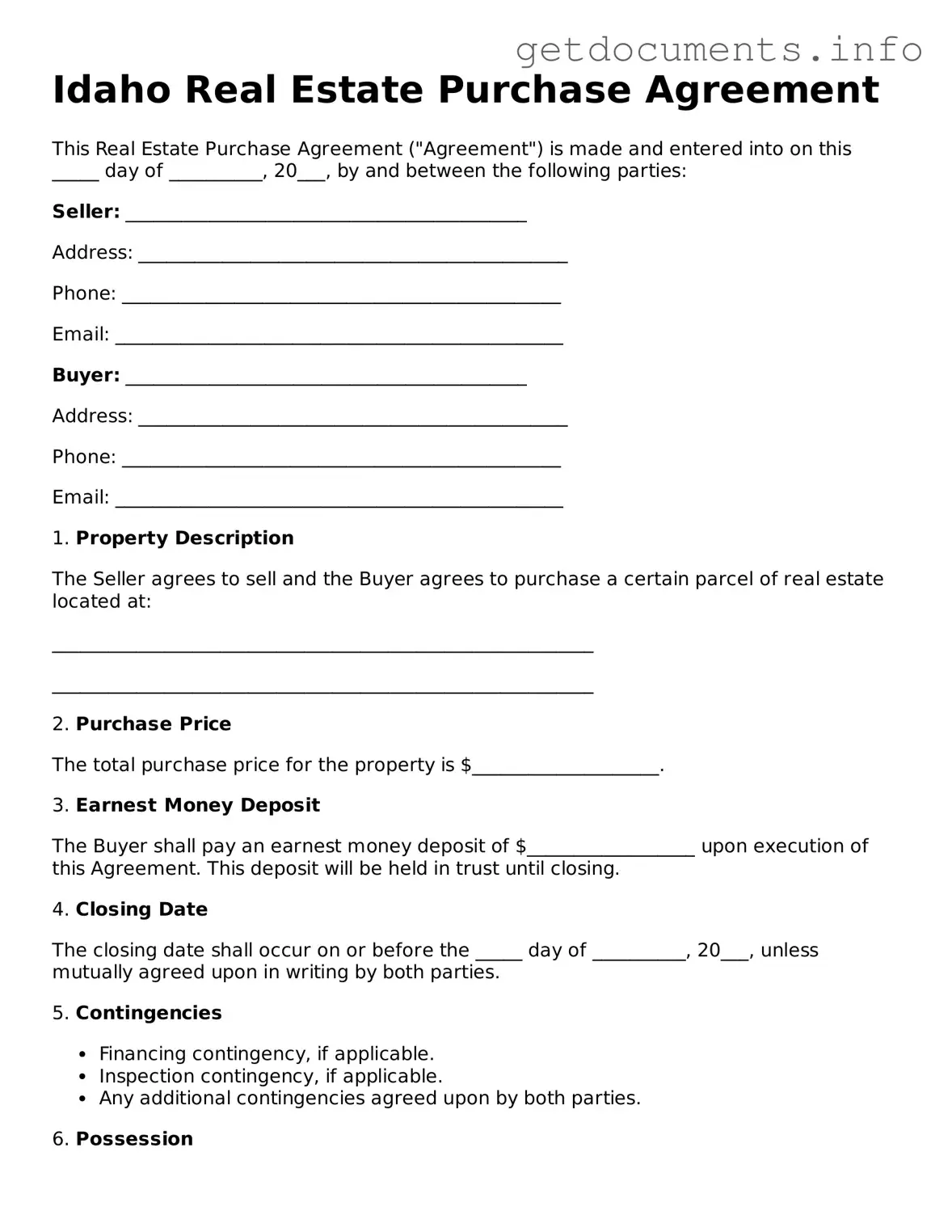Free Real Estate Purchase Agreement Template for Idaho
The Idaho Real Estate Purchase Agreement is a legal document used to outline the terms and conditions under which a property will be bought and sold in Idaho. This form serves as a binding contract between the buyer and seller, detailing essential information such as the purchase price, property description, and closing date. Understanding this agreement is crucial for both parties to ensure a smooth transaction process.
To get started on your real estate journey, fill out the form by clicking the button below.
Access Real Estate Purchase Agreement Editor
